Article
Sitka, Alaska: Where Bald Eagles Dare
Author(s):
In the fifth and last in a series on the many wonders of small ship cruising through South East Alaska, our travel columnists visit Sitka, Alaska -- home of a bald eagle sanctuary.
In the fifth and last in a series on the many wonders of small ship cruising through South East Alaska, our travel columnists visit Sitka, Alaska. Photography by the authors.
Remember the 1966 Norman Jewison, Oscar-nominated movie "The Russians Are Coming, The Russians Are Coming"? In the film, a Russian submarine runs aground near a small New England town. Helped by a great cast that included Alan Arkin and Carl Reiner, the movie made for a hilarious comedy.
It wasn’t so funny on Baranof Island in 1741, when the Russians came to the land of the Tlingit Indians, who had lived around Sitka for centuries. Led by Vitus Bering, the Russians arrived on a 10-year Great Northern Expedition to map out the arctic. Bering put 15 men ashore -- they never returned. Says local historian Ed Lynn Readicker-Henderson: “Perhaps the Tlingit made an early statement about their feelings toward intruders.”

The natives retaliated against the warring tactics of the Russians, whom they viewed as a threat. The Tlingits fought major battles in 1802 and 1804. A detail of the painting in the Sitka National Historical Park shows Katlian, the 1804 native chief wearing his raven mask and charging the Russians as they landed on the beach. Katlian is swinging the Russian blacksmith’s hammer that is on exhibit in the showcase below. It’s hard not to side with the Tlingits; they were fighting for not only their land but for their very existence.
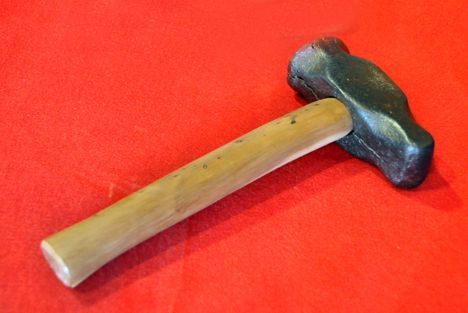
The park, sometimes called Totem Park, commemorates this battle of 1804 -- or, to be politically correct, “the Tlingit and Russian experiences in Alaska.” Situated on the Indian River on the site of the battle, it has a magnificent display both inside and out of historic totem poles. It also supports the Southeast Alaska Indian Cultural Center where visitors can watch artists at work, carving exhibits.
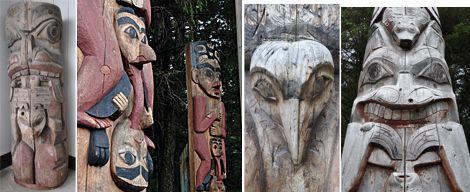
A guide explains that the expression "low man on the totem pole" doesn’t make sense, as the most important components of a totem pole are carved at the bottom.
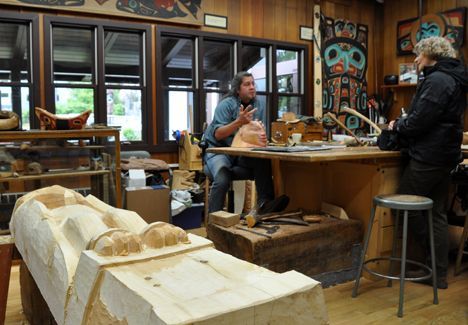
Totem poles and Katlian’s legendary raven mask are on display at the Sheldon Jackson Museum. Completed in 1897 and thus the oldest museum in Alaska, it occupies the first concrete building in the state. Most of its exhibits come from the personal collections of the indefatigable Presbyterian missionary, Rev. Dr. Sheldon Jackson (1834-1909). Even as he tried to Americanize the native communities, Jackson collected artifacts in order to preserve evidence of their culture whenever he journeyed deep into the interior of the state. He traveled into Siberia many times with Captain Michael A. Healy, the first African American to command a U.S. ship, the USRC Bear, and noticed the dependence of the native people on reindeer “for food, travel, and clothing.” Jackson was a practical man and somehow managed to bring almost 1,300 reindeer back to Sitka for his scattered congregations!

The Russians finally colonized this place the natives had called “Sheet’ká” -- the land behind the islands. The Russian presence is everywhere, especially in the form of the St. Michael’s Cathedral. The original building was constructed in the years 1844 to 1848 which would have made it the oldest in Alaska -- but it burned down on January 2, 1966, an inauspicious way surely to start a new year. The community rallied as the church caught fire; in 30 minutes by forming a living chain they managed to save almost all the interior and the religious icons some of which went back to the 17th century. It is recorded that one man by himself lifted down the heavy chandelier, yet it took six men to carry it out of the burning church.

The Sitka church has other legends, including how the icon of St. Michael came to be in the church. It had been packed on the steamer Neva that, unfortunately, sank 30 miles before it reached town. Thirty days later, still safe and intact in its crate, the icon washed up on the beach at Sitka!
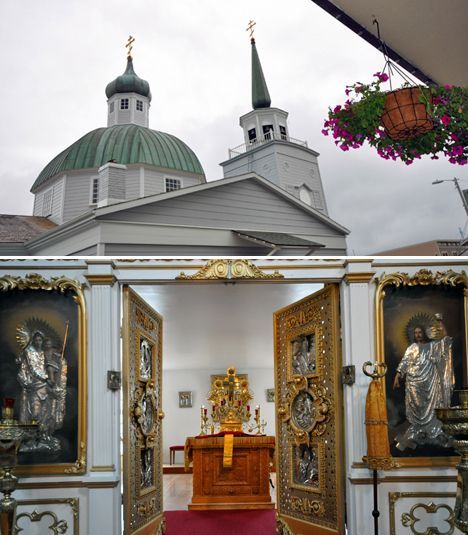
Other surprising events continue to happen in Sitka, such as the rehabilitation of raptor birds — particularly the bald eagle, Alaska’s State Bird at the Alaska Raptor Center. Passengers on our Island Spirit small ship cruise were some of the more than 50,000 people who visit each year to see how skilled professionals and volunteers care for injured birds.
The center can rehabilitate most eagles, unless the injury causes an amputation in which case the bird will not be released back into the wild. Injuries often include gunshot wounds, poisonings, and broken bones and wings. Raptors have to be exercised back to fitness when they break a wing.
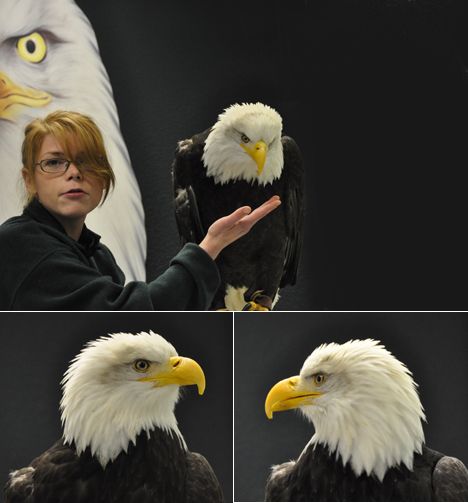
The eagles never become pets: They have ferocious beaks and talons that can crush like a vice. As visitors pass by, one bird sits on the arm of a docent surveying its audience. “Do you feel your eagle is bonding with you?” we ask the docent. The bald eagle swivels its head about 200 degrees to see who’s asking the question.
“No, I think he only tolerates me,” she replies, “But he pushes my glasses up my nose and he rearranges my hair!”
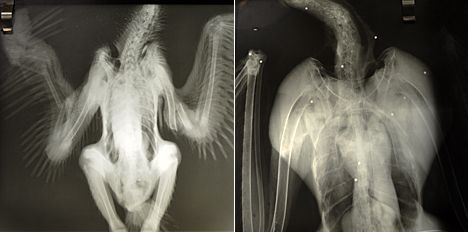
Our guide draws our attention to two x-rays up on a viewing box. The one on the left is of a three-week old bald eagle chick that had fallen out of its nest, and the one on the right is of “Sasquatch” who had been peppered with 15 shotgun pellets, but was later successfully released on June 30, 2006.
The town celebrates those releases with great affection: All the center’s volunteers stride down to the river with the professional staff. A little blessing is given and the crowd murmurs a touching farewell as the great bird of Alaska soars back into its domain. We wonder how it feels to be leaving such a special place. Perhaps it feels as we do every time we leave this special great land of Alaska.
The Andersons, who live in San Diego, are the resident travel & cruise columnists for Physician's Money Digest. Nancy is a former nursing educator, Eric a retired MD. The one-time president of the New Hampshire Academy of Family Practice, Eric is the only physician in the American Society of Travel Writers. He has also written five books, the last called The Man Who Cried Orange: Stories from a Doctor's Life.




